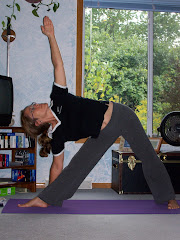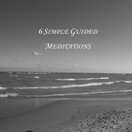Have you ever noticed that the quality of your breath, thoughts, and actions are directly related? In times of stress the breath and thoughts quicken and the breath becomes shallow. Actions tend to be rough, and in extreme stress, even shaky. The breath also follows an irregular pattern and feel rugged.
When you are feeling blissful, the body moves with steady grace; thoughts slow and calm. Inhales and exhales are deep and long.
This is one of the miracles of using the breath. Just as our thoughts can impact our breathing or motions, the reverse is also true. The trick is to guide the breath without strain. When there is strain, there is force. Forcing the breath can have negative results. So, check in every 6 or so breaths to see if your experience is one of more calm or increased agitation. If it's the latter, then return to a natural (non-guided) breath.
The Mohan's say in Yoga Therapy, "...there should be steadiness or uniformity (dirgha) and smoothness or fineness (sukshma).... Dirgha and sukshma are interrelated characteristics: Dirgha is long and sukshma is deep." [p132-133]
To reap the benefits of Yoga more fully, begin every hatha practice with checking in with your breath. Is it steady, subtle, long, and deep?
Maintain these qualities throughout your practice. Remember this is a practice! Over time it will be easier to find smooth, quiet, slow, and full breaths throughout the day. Even set aside a few minutes two or three times a day to check in with your breath.
When you guide the breath to flow in this manner, your thoughts and actions will follow suit.
Love Much,
Kris
www.TotalHealthYoga.com
www.TotalHealthYogaClasses.Blogspot.com
Today is the first day of the rest of your life!
Tuesday, July 29, 2008
Subscribe to:
Post Comments (Atom)



No comments:
Post a Comment